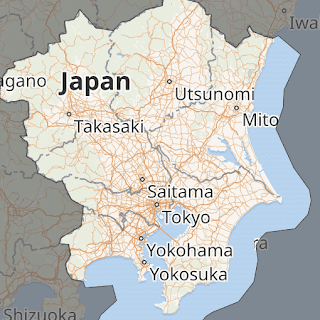There are two major metropolitan regions in Japan.Our train meal was only eggs, peanuts and chips.
View from our table on the 36th floor.
Walked 3386 steps.
This will be our final stay at this hotel. Tomorrow, our outing to Nagoya Castle.
- Kanto
- Means East of the Barrier, the Hakone checkpoint.
- Essentially, Greater Tokyo.
- Two watershed moments.
- The Great Kanto Earthquake of 1923, which killed more than 100,000.
- Operation Coronet, the proposed land invasion of the Kanto plain during the latter part of World War II...which did not occur because the Atomic Bombs over Hiroshima and Nagasaki convinced Japan to surrender.
- Had a population of 43.23 million in 2019. Was around 11 million in 1920.
- Means West of the toll gate, and was the center of feudal Japan.
- Sometimes also called the Kinki region.
- But this second name has been less and less used because of the English word kinky, or perverted. In 2016 Kinki University changed its English name to Kindai University. Earlier, Kinki Nippon Railway Company became Kintetsu Railway in 2003, then Kintetsu Corporation in 2015.
- Includes Lake Biwa, the largest freshwater lake in the country.
- Major cities are Kyoto, Osaka and Kobe.
- Nara was the eastern point of the Silk Road, becoming the site of Japan's first permanent capital in the period from 710-784.
- Buddhism came and speak from here.
- Shinto's holiest shrine is in Mie prefecture.
- Capital moved to Kyoto in 794 by Emperor Kammu, starting the Heian Period, which lasted to 1185.
- It was during this time frame that Japanese culture emerged, and both Katakana and Hiragana, the two types of Japanese script, were developed.
- The first novel, Tale of Genji, was written by Murasaki Shikibu, lady-in-waiting the Imperial Court around 1007 AD.
- The real power was in the hands of the Fujiwara clan, who had wisely intermarried into the Imperial Family.
- Kyoto remained as the national capital for a whole millennium.
- Had a population of 22.8 million in 2020. Was around 9 million in 1920.
- Cities have managed to keep their idiosyncrasies: Kyoto for culture, Osaka for mercantilism, Nara for history and Kobe for cosmopolitanism.
- The saying is that Kyotoites overspend on clothing, while Osakans overspend on food.
- Kyoto is the mecca of traditional Japanese cuisine, like kaiseki.
- Various parts of Kansai are famous for wagyu beef, like Kobe, Matsuzaka and Omi.
- Natto is not so popular.
- Famous for baseball, as both the Hanshin Tigers and Orix Buffalos are based in Kansai, and the former beat the latter in their recent Japan Series Championship. Mind you, there was a curse linked to Kentucky Fried Chicken, and this was the Tigers first title success in 38 years. KFC curse? There is a whole Wikipedia explanation you can here read.
- Kansai has been largely preserved, unique for Japan, for there was only minimal damage in World War II.
- Has the most UNESCO World Heritage Listings than any other region or Japan.
So, subtracting Kanto and Kansai, the next three largest cities are Nagoya (2.3 million), Sapporo (2 million) and Fukuoka (1.6 million).
- We were in Sapporo about a week ago, The entire island of Hokkaido has only one castle, Matsumae, built in 1606, in the extreme south.
- Castles in Japan were built for military defense.
- There might have been more than 5000 in history. Among the first was Oda Nobunaga's in 1576.
- There are today only 12 major castles. All of them were not subjected to World War II bombing.
- The largest is Himeji Castle in Himeji, built in 1333, around 37 miles from Kobe, which you can view from the bullet train track.
- We are currently in Nagoya,
- The one outing we plan to take is Nagoya Castle, on the site of an earlier castle where Oda Nobunaga might have been born. Rebuilt in 1611 by Tokugawa Ieyasu, although some of this history is controversial.
- Was partially destroyed in WWII because an army headquarters was stationed there. Repairs are continuing to today.
- A Kaya tree more than 600 years old was there before the first construction, although almost died because of those air raids.
- Famous for chrysanthemums.
- Nagoya is the capital of Aichi Prefecture.
- Means calm.
- I came here in 2005, where a World Expo was held. Theme was Nature's Wisdom. Expected 15 million visitors, but recorded more than 22 million, resulting in a profit of $68 million.
- Is the third largest metropolitan area in Japan with population of 10 million.
- Home of Oda Nobunaga, Toyotomi Hideyoshi and Tokugawa Ieyasu.
- Mitsubishi Aircraft Company established here in 1920, this is where most of their aircraft was built, like the Zero fighter.
- Was a major target of air raids in WWII.
- Home of Toyota.
- Has a major airport, a port with the highest international trade value in Japan, and Nagoya Station, which is the world's largest train station by floor area.
- The city, especially Nagoya Castle, has been featured in two Godzilla films.
- Has so many twin cities around the world that there is a whole Wikipedia page.
- Will host the Asian Games in 2026.
So back to our Japan Rail Pass journey. We will stop through Fukuoka during our third and final 7-day ticket. Sapporo with no Fall colors was a disappointment. This current leg might have been worse. No colors, of course, but the Shinkansen ride from Tokyo to Nagoya completely missed Mount Fuji, which was shrouded in clouds.
We were looking forward to the Executive Club at the Marriott Associa Hotel located within the Nagoya Train Station. However, requirements had changed, and only those who stay 100 nights/year in Marriott Hotels has access to that room, which is fabulous. We got shunted to another facility which had nothing much to eat, but with decent drinks.
Breakfast was also sparse.View from our table on the 36th floor.
Walked 3386 steps.
This will be our final stay at this hotel. Tomorrow, our outing to Nagoya Castle.
-


























Comments
Post a Comment